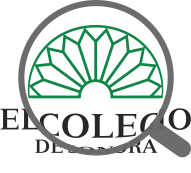Bankruptcy of the Banco de Sonora after the Political Conjuncture of the Plan de Hermosillo, 1929-1933
La quiebra del Banco de Sonora tras la coyuntura política del Plan de Hermosillo, 1929-1933
| dc.contributor.author | Grijalva Díaz, Ana Isabel | |
| dc.contributor.author | Anaya Merchant, Luis | |
| dc.coverage.spatial | MX-SON | en-US |
| dc.creator | GRIJALVA DIAZ, ANA ISABEL; 46702 | |
| dc.creator | Anaya Merchant, Luis Manuel; 18913 | |
| dc.date | 2020-02-04 | |
| dc.date.accessioned | 2022-06-28T19:43:07Z | |
| dc.date.available | 2022-06-28T19:43:07Z | |
| dc.date.issued | 2020-02-04 | |
| dc.identifier | https://regionysociedad.colson.edu.mx:8086/index.php/rys/article/view/1205 | |
| dc.identifier | https://doi.org/10.22198/rys2020/32/1205 | |
| dc.identifier.uri | https://repositorio.colson.edu.mx/handle/2012/45988 | |
| dc.description | The purpose of this paper is to analyze the factors related to the Banco de Sonora’s bankruptcy and to identify the cash-flow problems which impeded its operations resumption after the indirectly provoked by the Plan de Hermosillo bank run during 1929. The study is carried out from the perspective of the liberal banking model of issuance in which the bank was circumscribed. The results warn that the Banco de Sonora neglected its finances by granting large amounts of financing to a few clients without verifying their credit recovery capacity. This investigation reveals that the Chinese individuals living in Sonora were not responsible for the Banco de Sonora’s bankruptcy as noted by the Sonoran historiography. It is concluded that the bank was financially weak when it resumed operations (1922) under the legal nature of those financial business specially dedicated to mining, agriculture and industrial operations through privileged loans without mortgage. | en-US |
| dc.description | El objetivo de este trabajo es analizar los factores involucrados en la quiebra del Banco de Sonora e identificar los problemas de liquidez que le impidieron reanudar operaciones después de la corrida bancaria ocasionada de manera indirecta por el Plan de Hermosillo en 1929. El estudio se realiza desde la perspectiva del modelo bancario liberal de emisión en el que se circunscribió dicho banco. Los resultados advierten que el Banco de Sonora descuidó sus finanzas al otorgar grandes montos de financiamiento a pocos clientes sin verificar la capacidad de recuperación del crédito. Contrario a lo que ha señalado la historiografía sonorense, esta investigación revela que los cuentahabientes chinos no fueron los responsables de la quiebra del Banco de Sonora. Se concluye que el banco era débil en términos financieros cuando reinició operaciones (1922) bajo el carácter jurídico de banco refaccionario. | es-ES |
| dc.description.abstract | The purpose of this paper is to analyze the factors related to the Banco de Sonora’s bankruptcy and to identify the cash-flow problems which impeded its operations resumption after the indirectly provoked by the Plan de Hermosillo bank run during 1929. The study is carried out from the perspective of the liberal banking model of issuance in which the bank was circumscribed. The results warn that the Banco de Sonora neglected its finances by granting large amounts of financing to a few clients without verifying their credit recovery capacity. This investigation reveals that the Chinese individuals living in Sonora were not responsible for the Banco de Sonora’s bankruptcy as noted by the Sonoran historiography. It is concluded that the bank was financially weak when it resumed operations (1922) under the legal nature of those financial business specially dedicated to mining, agriculture and industrial operations through privileged loans without mortgage. | en-US |
| dc.description.abstract | El objetivo de este trabajo es analizar los factores involucrados en la quiebra del Banco de Sonora e identificar los problemas de liquidez que le impidieron reanudar operaciones después de la corrida bancaria ocasionada de manera indirecta por el Plan de Hermosillo en 1929. El estudio se realiza desde la perspectiva del modelo bancario liberal de emisión en el que se circunscribió dicho banco. Los resultados advierten que el Banco de Sonora descuidó sus finanzas al otorgar grandes montos de financiamiento a pocos clientes sin verificar la capacidad de recuperación del crédito. Contrario a lo que ha señalado la historiografía sonorense, esta investigación revela que los cuentahabientes chinos no fueron los responsables de la quiebra del Banco de Sonora. Se concluye que el banco era débil en términos financieros cuando reinició operaciones (1922) bajo el carácter jurídico de banco refaccionario. | es-ES |
| dc.language.iso | spa | |
| dc.publisher | El Colegio de Sonora | es-ES |
| dc.rights | Derechos de autor 2020 Ana Isabel Grijalva Díaz, Luis Anaya Merchant | es-ES |
| dc.rights | https://creativecommons.org/licenses/by-nc/4.0/ | es-ES |
| dc.rights | info:eu-repo/semantics/openAccess | es-ES |
| dc.source | 2448-4849 | |
| dc.source | 1870-3925 | |
| dc.source | región y sociedad; Vol. 32 (2020): Rolling Pass; e1205 | en-US |
| dc.source | región y sociedad; Vol. 32 (2020): Publicación continua; e1205 | es-ES |
| dc.subject | Ciencias Sociales | |
| dc.subject | Banco de Sonora | en-US |
| dc.subject | Banco mercantil y agrícola | en-US |
| dc.subject | Plan de Hermosillo | en-US |
| dc.subject | Banco de Sonora | es-ES |
| dc.subject | Banco mercantil y agrícola | es-ES |
| dc.subject | Plan de Hermosillo | es-ES |
| dc.subject.lcsh | Banco de Sonora | en-US |
| dc.subject.lcsh | Banco mercantil y agrícola | en-US |
| dc.subject.lcsh | Plan de Hermosillo | en-US |
| dc.subject.lcsh | Banco de Sonora | es-ES |
| dc.subject.lcsh | Banco mercantil y agrícola | es-ES |
| dc.subject.lcsh | Plan de Hermosillo | es-ES |
| dc.title | Bankruptcy of the Banco de Sonora after the Political Conjuncture of the Plan de Hermosillo, 1929-1933 | en-US |
| dc.title | La quiebra del Banco de Sonora tras la coyuntura política del Plan de Hermosillo, 1929-1933 | es-ES |
| dc.type | info:eu-repo/semantics/article | |
| dc.type | info:eu-repo/semantics/publishedVersion | |
| dc.audience | generalPublic | |
| dc.identificator | 5 |
Files in this item
| Files | Size | Format | View |
|---|---|---|---|
|
There are no files associated with this item. |
|||










